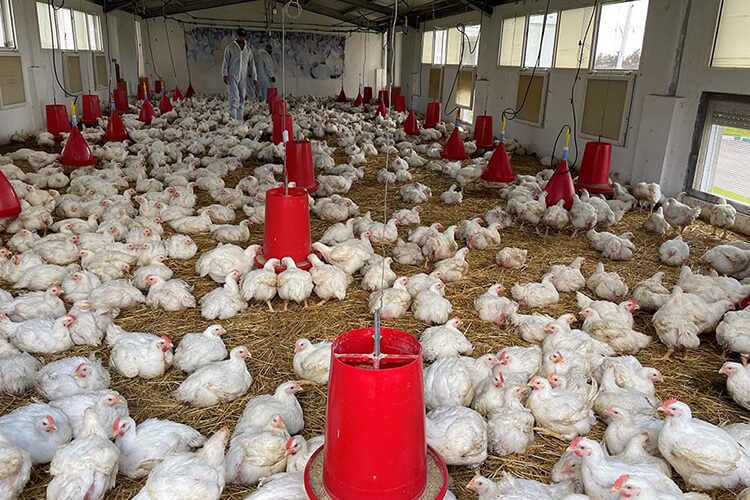 Reading Time: 2 minutes
Reading Time: 2 minutes
U.S. corn outperforms corn from other countries in terms of digestible starch, according to the U.S. Grains Council.
A U.S. Grains Council (USGC) study partially funded by Minnesota Corn aimed at changing perceptions about the quality of U.S. corn among international buyers has yielded positive results.
Working with Auburn University, USGC repeated an experiment in which it studied the efficiency of U.S. corn as a broiler chicken feed source compared to Argentinian or Brazilian corn. The experiment aimed to dispel the notion that U.S. corn is dustier and less valuable than South American corn. That perception arises because U.S. corn isn’t as hard and tends to break apart more during transit.
Corn is an important ingredient in poultry diets because of its digestibility and nutritional advantages compared to other grains, according to USGC.
The U.S. is the largest producer of corn and exports several billion bushels each year to foreign countries. But the U.S. faces competition from other countries in corn markets, including from Brazil and Argentina, which are the world’s third- and fifth-biggest corn producers, respectively.
In year one of the experiment, researchers found that Argentinian corn was a less efficient feed source than U.S. and Brazilian corn. After shipping, U.S. and Argentinian corn are roughly equal in efficiency, the researchers found, though locally sourced U.S. corn is a more efficient feed source than imported Argentinian corn.
In year two, the results of which were published this month, researchers found that U.S. corn is a more efficient broiler feed source than Brazilian corn, even after shipping. Specifically, broilers need less U.S. corn than Brazilian corn to gain a kilogram of body weight, a fact that can translate into less feed use and, ultimately, cost savings.
In a statement, Kurt Shultz, USGC’s senior director for global strategies, said U.S. corn outperforms corn from other countries in terms of digestible starch despite its fragility.
“These benefits are not immediately apparent in an individual chicken,” he said, “but when you look across a flock of millions of birds per year, which is typical in commercial poultry operations, it leads to hundreds of thousands of dollars of additional profitability against South American corn.”
Going forward, USGC plans to conduct commercial trials with two or three international feed companies. The council will also conduct milling trials to benchmark the energy and milling costs of corn from various origins and their performance in commercial poultry operations. Ultimately, the study will highlight the performance benefits of U.S. corn and how it improves the competitive advantage and profitability of customers in an increasingly competitive environment.
Each year, as part of its mission to develop and maintain international markets for corn, ethanol, and ethanol co-products, Minnesota Corn invests corn check-off funds in USGC. Thanks in part to these investments, grain and grain product exports account for billions of dollars in economic output in the state each year.
For example, a recent USGC analysis found that the value of Minnesota’s grain and grain product exports in 2021 was nearly $2.6 billion. The exports created ripple effects throughout the economy, supporting 21,704 jobs and $5.6 billion in economic output.
Learn more about grain exports on the U.S. Grains Council’s website, grains.org.

